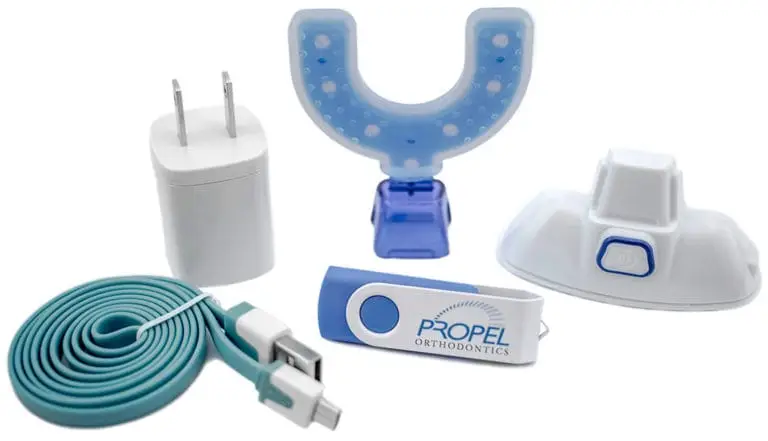
Accelerated Invisalign – Propel’s VPro5
Diamond Braces is happy to offer its patients VPro5 by Propel Invisalign, the latest tool that helps to straighten your teeth quicker.
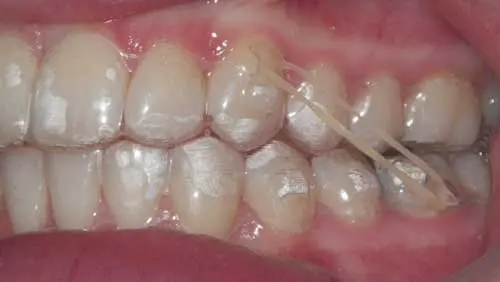
Invisalign treatments can sometimes include the use of elastics, also known as “Invisalign rubber bands for bite alignment”. These rubber bands aren’t always a necessary part of the orthodontic treatment. However, when people use them, they can generate additional force that leads to impressive results.
One of the key benefits of these rubber bands is their ability to improve bite alignments. They can be especially effective in correcting issues such as overbites or crossbites.
Elastic bands connect your upper and lower teeth. These elastics apply pressure by hooking onto aligners or attachments.
Known as buttons, attachments adhere to your teeth. They enhance the grip of the aligners and secure your rubber bands. This procedure guarantees a consistent exertion of pressure on your top and bottom teeth.
Orthodontists bond and supervise both rubber bands and attachments. At-home aligner companies can’t use these tools. This constraint complicates the forecast of treatment results. In some instances, it might even damage your teeth or gums.
For dependable results, we recommend receiving treatment from a licensed orthodontist in their office. The duration and maintenance of Invisalign rubber bands play a crucial role in the treatment plan.

Invisalign clear aligners use small, discreet rubber bands. These bands connect the top and bottom rows of teeth. The bands apply force to the aligners. This force helps to correct bite alignment.
Now, let's discuss how to attach rubber bands to Invisalign aligners. A straightforward process can make a significant difference in your smile.
These bands hook onto your teeth. They use a special hook in the aligner or connect to Invisalign attachments. These attachments, also known as buttons, are small fixtures on certain teeth. They give extra grip for the aligners and a hook for the rubber bands.
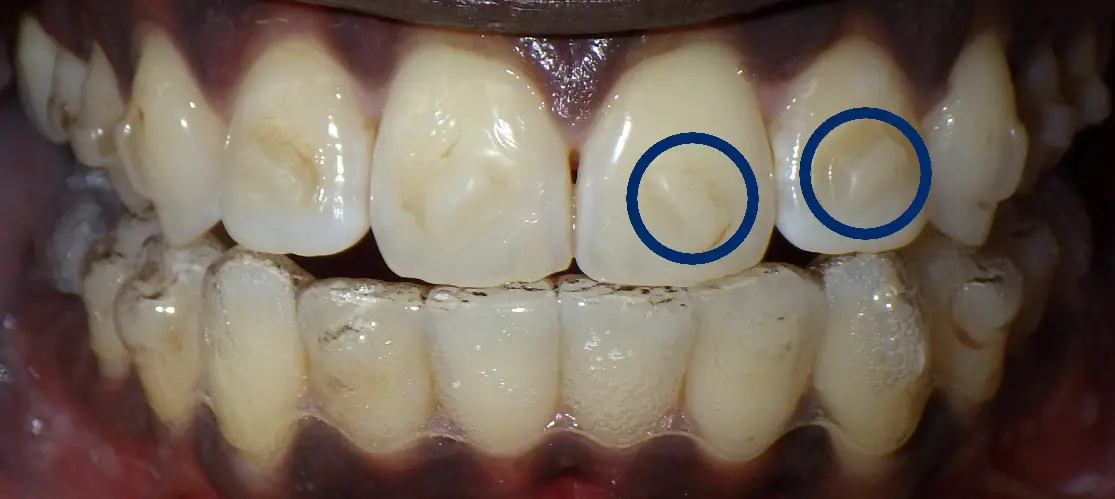
Invisalign aligners, also known as plastic aligners, use rubber bands. These bands apply force. This force moves teeth to their correct positions.
Rubber bands are effective in adjusting bite alignment. They actively draw the rows of top and bottom teeth into alignment.
The bands hook to the teeth. They use a small hook in the aligner or Invisalign attachments.
Attachments, or buttons, are small things stuck to the teeth. They help the aligners grip better to move the teeth. They also work as hooks for the rubber bands.
You usually wear two bands, one on each side of your mouth. They often connect to an upper eyetooth and a lower molar.
Receive a large pack of rubber bands from your orthodontist. Make sure to change them daily or follow your doctor’s advice. This practice keeps the elastic fresh and effective. If a band breaks, replace it immediately.
Like your aligners, keep your bands on for 22 hours a day. Only remove them for meals, drinks, and teeth cleaning. Use a soft bristled toothbrush for cleaning. Aim for a perfect smile by following these instructions.
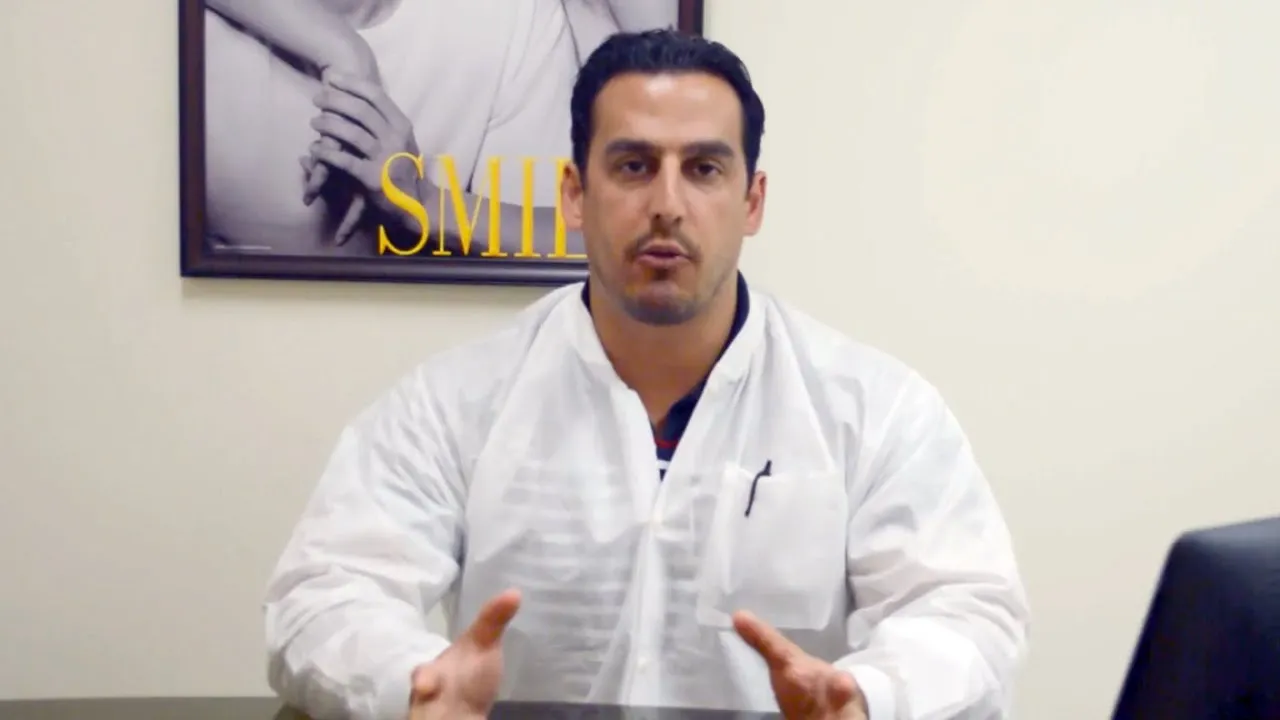
First, put on your aligners. Then, attach a rubber band to the top or bottom aligner. Your orthodontist will tell you which tooth to use.
Next, use two fingers to stretch the rubber band. Connect it to the matching tooth on the other aligner.
You can use a mirror at first. But soon, you’ll do it without thinking.
Change your rubber bands daily or as your doctor says. This keeps the elastic fresh and working well. Wear the rubber bands for at least 22 hours a day, whenever you have your aligners on.

For the full Invisalign treatment, wear your rubber bands as your doctor guides you. You’ll receive a large pack of rubber bands. Change these bands each time you change your aligners.
Avoid utilizing them beyond a 24-hour period. After that, start with a fresh pair. This approach keeps them effective. Dispose of the used ones and always start with a new pair.
When considering the type of braces, remember that Invisalign is just one option. Other options include ceramic braces, lingual braces, and traditional metal braces. Ceramic braces and lingual braces are less noticeable than metal ones.
Metal brackets are a common component of these braces. Some braces even have tooth-colored brackets to blend in with your teeth. Your orthodontist will help you choose the best option for your needs.
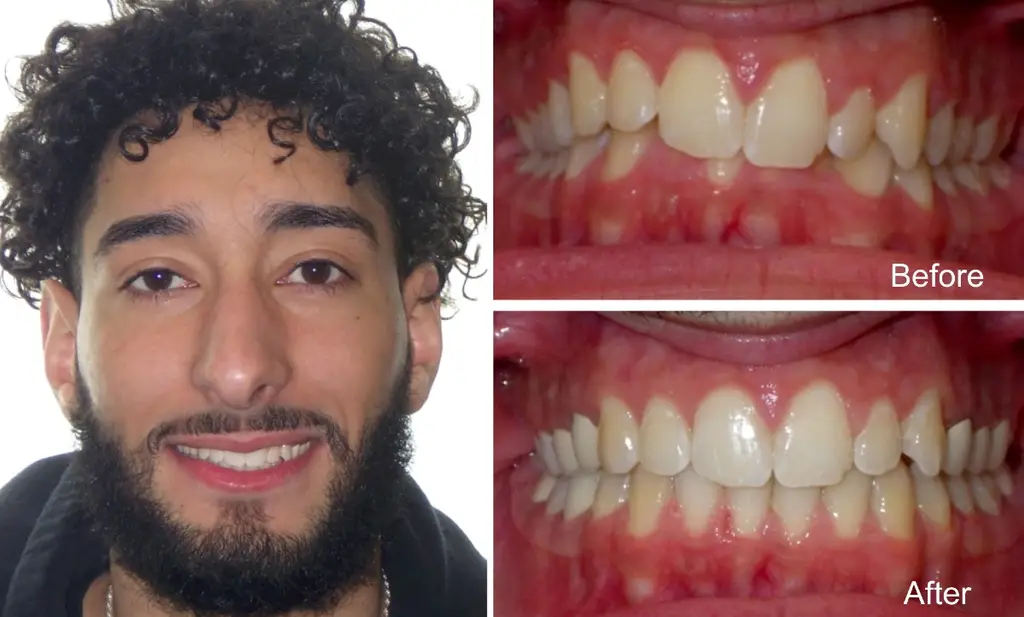
“Invisalign elastics for overbite and crossbite correction” are a great tool. They help fix issues like overbites, underbites, and open bites. How do they work? They apply extra force to align the bite just right.
This method is a key feature of direct orthodontic care. It sets it apart from mail-order aligner brands. Only orthodontists can oversee the use of these bands.
That’s why cheaper options with virtual doctors can’t use this effective method. So, if you’re considering Invisalign, remember the value of these elastics. They could be the key to your perfect smile.

If a rubber band’s hook or Invisalign attachment breaks, stop using it. If wearing one feels odd, stop using both until fixed.
You have choices. You can:
Not an emergency. Your Invisalign treatment is still effective.